Got a Strong Trunk. Good. But Are You Also Mobile?
Speed & Agility | Strength & ConditioningABOUT THE AUTHOR

Phil White
Phil White is the co-author of Waterman 2.0 (with Dr. Kelly Starrett), The 17 Hour Fast (with Dr. Frank Merritt), Unplugged (with Dr. Andy Galpin and Brian Mackenzie) and Game Changer (with Fergus Connolly). He writes for Train Heroic, HANAH, Momentous, XPT, Onnit, StrongFirst, TRX, McGregor FAST, and other leaders in human performance. In a previous life, Phil was nominated for a screenwriting Emmy. He lives with his wife and two sons in the mountains of Colorado. Connect with Phil at www.philwhitebooks.com
// Thoracic Spine
While we commonly feel excess tension around the lumbar and cervical spine, a knotty t-spine is often overlooked, despite it feeding tightness downstream and upstream to these common trouble spots. If your thoracic spine gets and stays too tight, you’re going to struggle to rotate your torso, might become compromised in flexion and extension, and may even encourage dysfunctional breathing patterns. Here’s an exercise that can help restore full ROM:
Your Title Goes Here
Your content goes here. Edit or remove this text inline or in the module Content settings. You can also style every aspect of this content in the module Design settings and even apply custom CSS to this text in the module Advanced settings.
T-Spine Overhead Extension on Gemini
- Lie on your back on the ground
- Position an MWOD Gemini horizontally inside your shoulder blades and at the base of them
- Extend both arms overhead
- Bridge your hips up a few inches and then slowly lower them back down
- After 15 to 25 reps, move the Gemini slightly higher. Eventually end with it on your traps at the base of your neck.
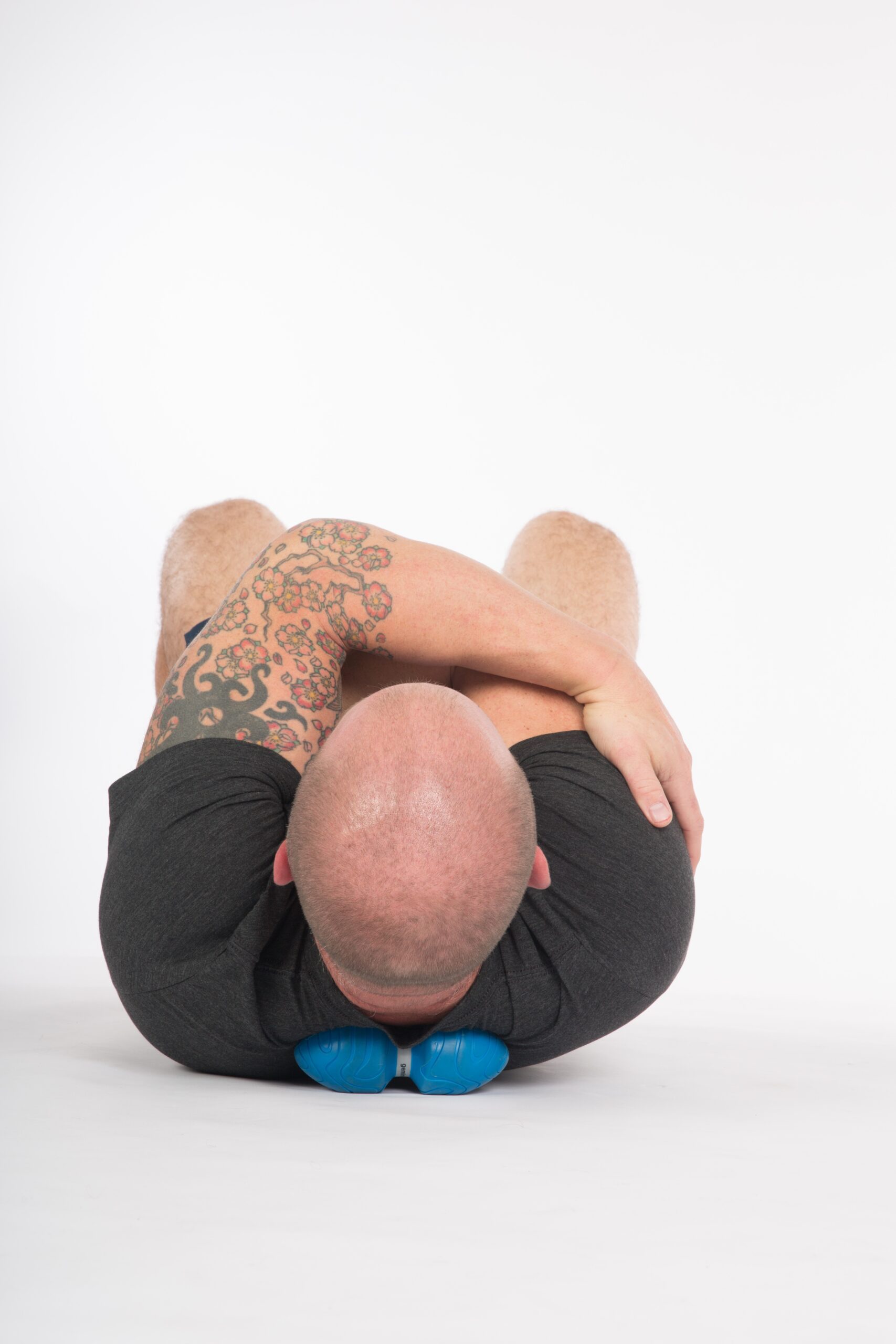
// Abdomen
Because the gut area is involved in bracing during compound lifts like the deadlift, squat, and kettlebell swing, is responsible for generating torque during twisting – see throwing a baseball or football, any kind of paddling, or slinging a med ball in the gym – and, as previously mention, acts as a conduit for power exchange between the big engines of the hips and shoulders, it can get mighty tight. Fortunately, there are a couple of simple ways to unglue these gnarly old tissues:
Your Title Goes Here
Your content goes here. Edit or remove this text inline or in the module Content settings. You can also style every aspect of this content in the module Design settings and even apply custom CSS to this text in the module Advanced settings.
Gut Smash
- Lie face down on the floor
- Place an MWOD Supernova at the bottom of your gut, just above your pelvis
- Slowly roll across the ball
- Move the ball up your abs and across them, camping out in any sore spots. You can also take deep nasal diaphragm breaths into the ball while it’s stationary.
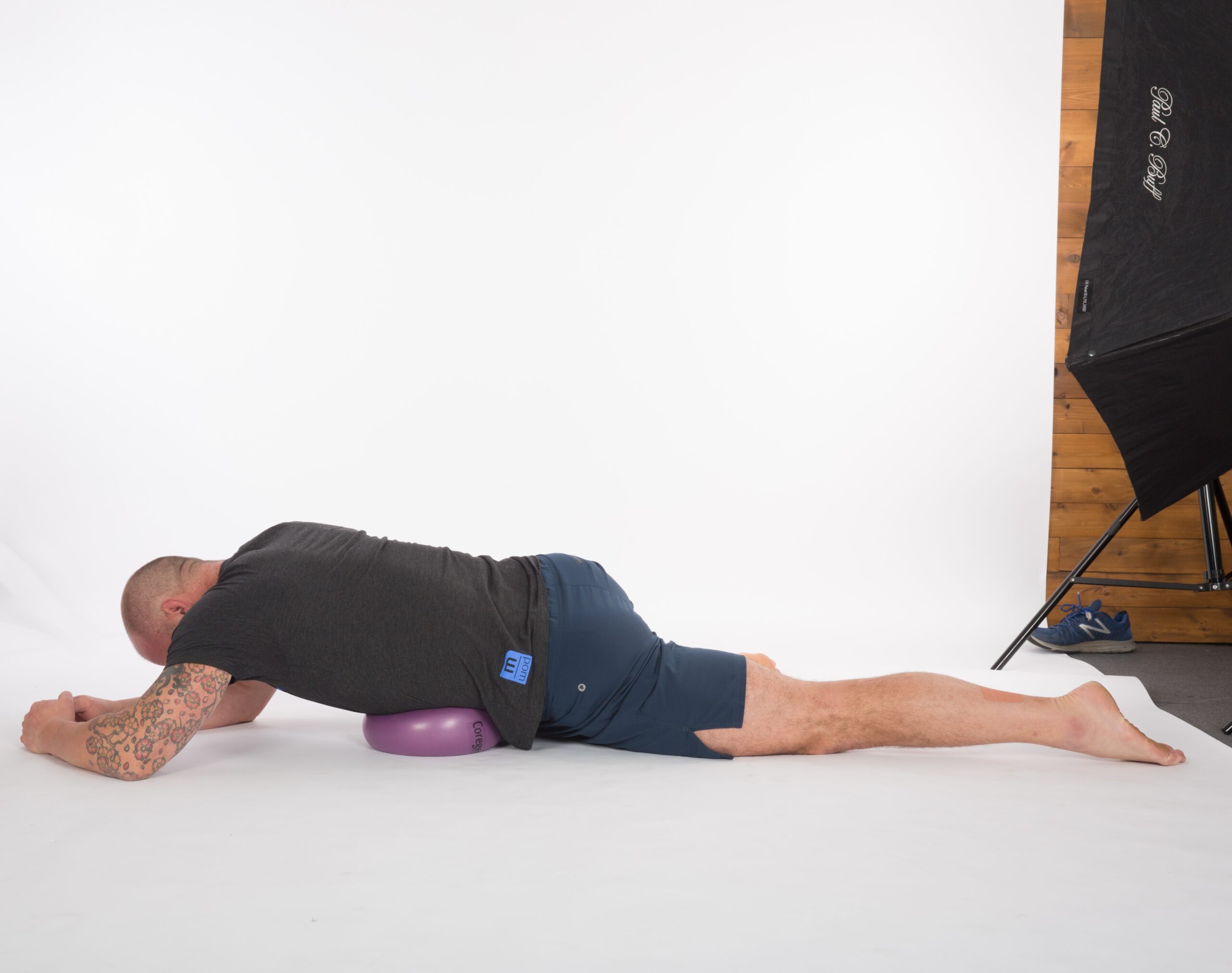
Your Title Goes Here
Your content goes here. Edit or remove this text inline or in the module Content settings. You can also style every aspect of this content in the module Design settings and even apply custom CSS to this text in the module Advanced settings.
Oblique Side Smash
- Lie on your side on the ground
- Place an MWOD Supernova just above your left hip
- Slowly roll across the ball
- You can also turn slightly more onto your front to capture the inside of the obliques
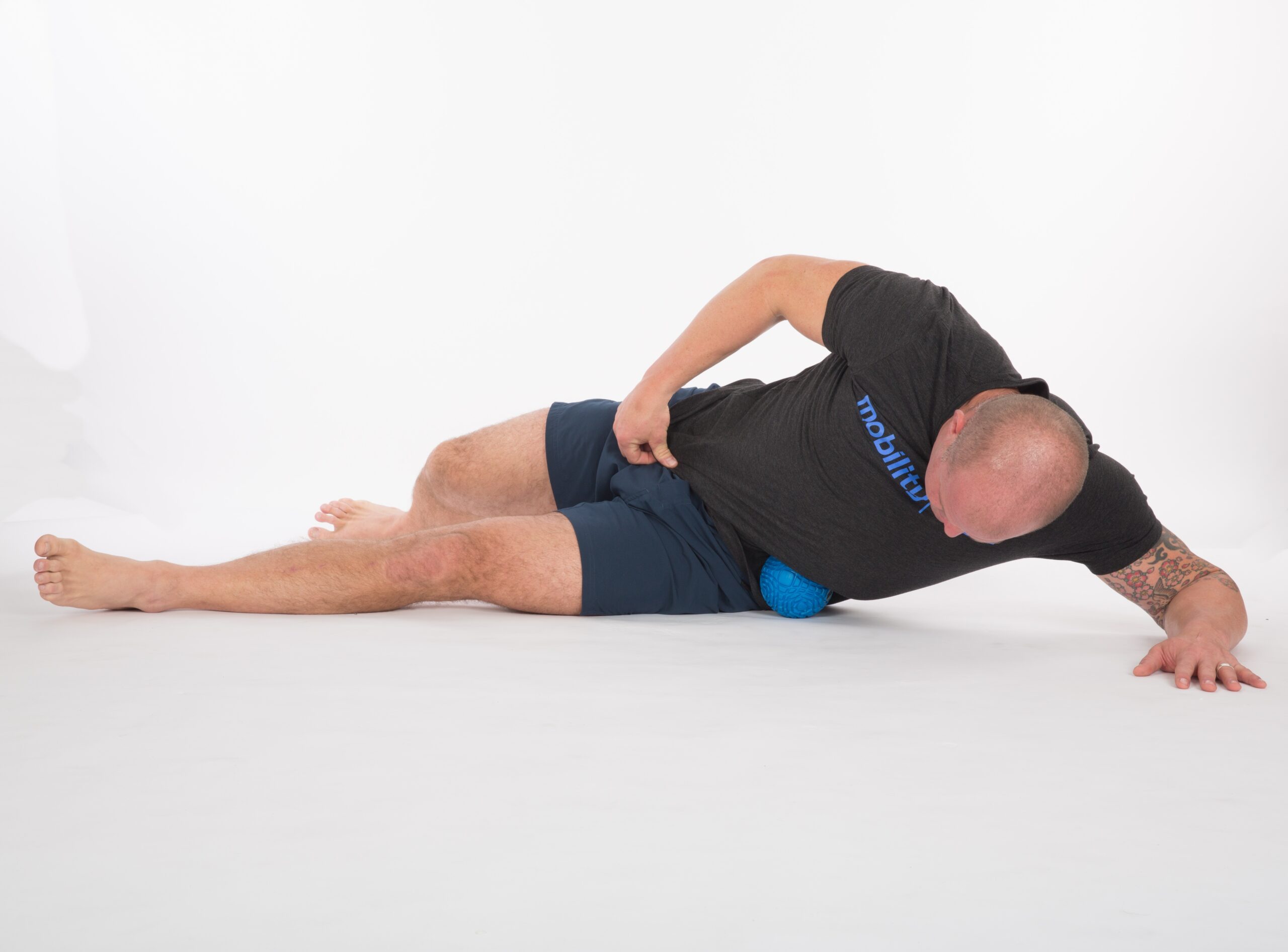
// Shoulders, Pecs and Lats
Just as with the lumbar spine, which we’ll address in a moment, the shoulder complex is, well, complex. We can’t just consider the ball and socket joint itself, but must also consider the big muscle groups surrounding it that can bring a lot of force to bear. For the sake of simplicity, we’ll focus on the lats and pecs. These are both involved in overhead and horizontal pushing and pulling motions (see: an awful lot of what you do in the weight room), and are powerhouses that when left to their own devices, become extremely gristly and can compromise shoulder function. So let’s do something about that with these simple yet highly effective exercises:
Your Title Goes Here
Your content goes here. Edit or remove this text inline or in the module Content settings. You can also style every aspect of this content in the module Design settings and even apply custom CSS to this text in the module Advanced settings.
Banded Bully with Extension Bias
- Loop one end of a medium (green) resistance mobility band around a squat rack pole or similar anchor
- Hook the other end of the band around your left elbow
- Facing away from the anchor, place your left hand behind your back, using your right hand to keep it there
- Take a big step forward with your left foot and turn your torso to the right
- As you do so, pull your left elbow forward
- Shift your foot position to the right several times to emphasize the soft tissue in your t-spine
- Switch sides
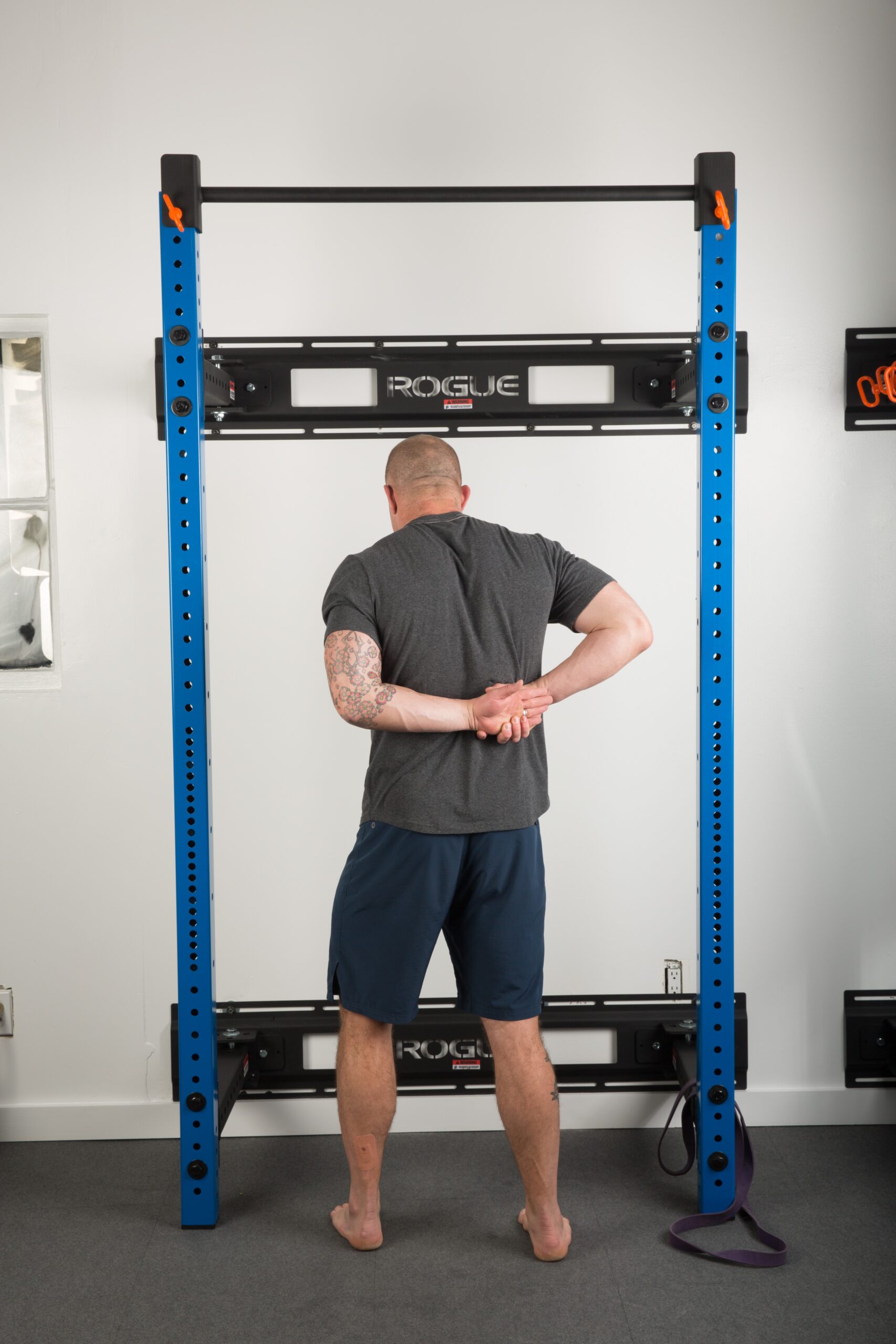
Your Title Goes Here
Your content goes here. Edit or remove this text inline or in the module Content settings. You can also style every aspect of this content in the module Design settings and even apply custom CSS to this text in the module Advanced settings.
Banded Lateral Opener
- Hook one end of a medium (green) resistance mobility band around a squat rack pole or similar anchor just above shoulder height
- Loop your left wrist through the other end of the band
- With your back to the anchor, take a step forward with your right foot
- Turn your torso to the right. You can alter the stimulus by moving the band down the pole and can also turn your head up and away.
- Switch sides
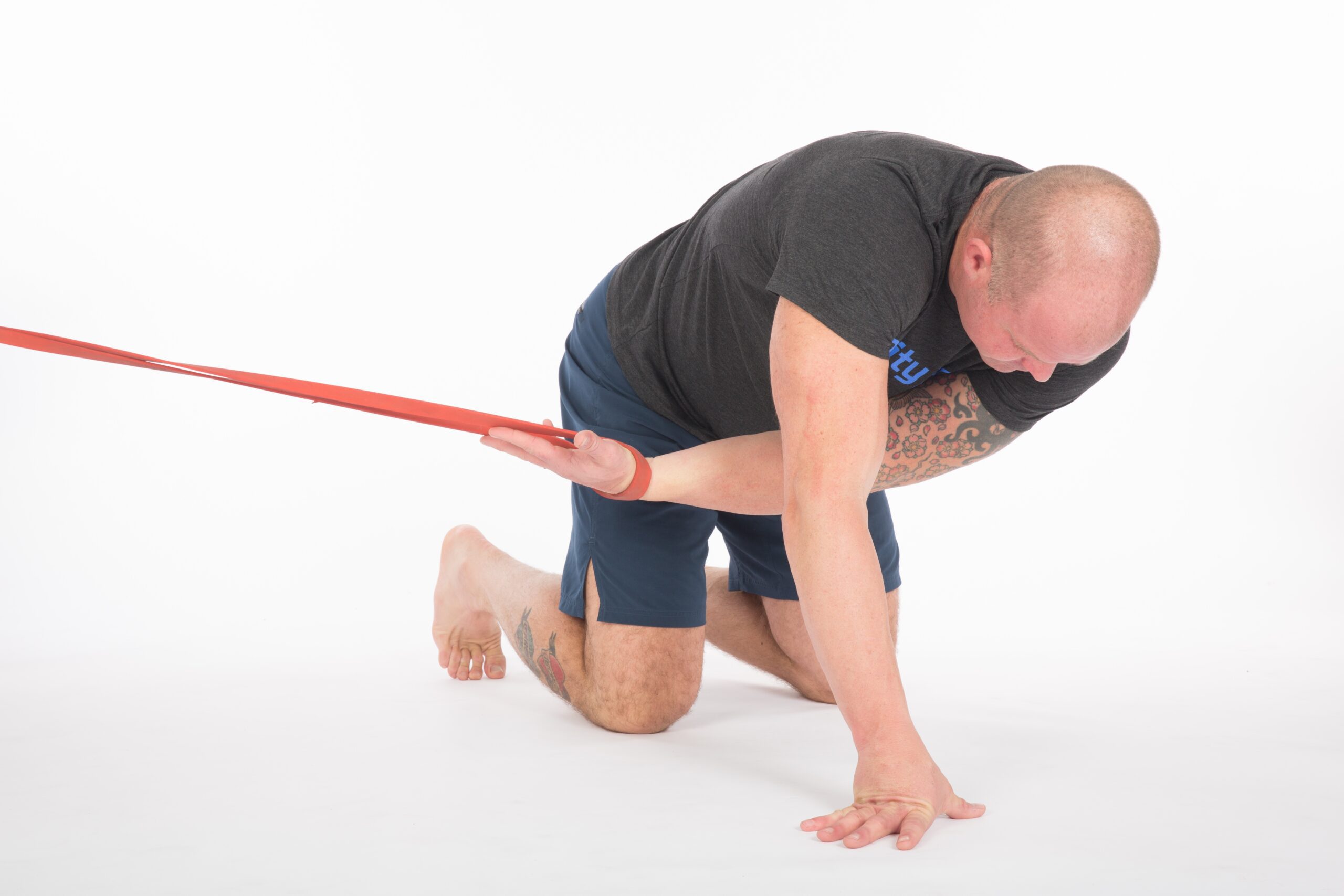
// Lumbar Spine/Glutes/Hips/High Hamstrings
No article of this type would be complete without considering the pesky lower back. Pretty much every athlete has either dealt with back pain, is struggling with it right now, or will face it in the future. Reasons include athletic ones such as poor positioning, structural factors such as asymmetry and imbalances, and lifestyle-related issues like too much sitting. Fortunately, there are some simple mobility exercises that can set things right, both in the pesky area itself and also the tissues upstream and downstream that can feed tension into it (and yes, I do know that the glutes, hips, and hamstrings are technically below the trunk, but as I said, they can dramatically affect it so we’re going there).
Your Title Goes Here
Your content goes here. Edit or remove this text inline or in the module Content settings. You can also style every aspect of this content in the module Design settings and even apply custom CSS to this text in the module Advanced settings.
QL Smash
- Lie on the floor on your back in front of a couch, plyo box or bench with your feet up on it
- Place an MobilityWOD Gemini or two lacrosse balls taped together horizontally across your lower back, just above your pelvis
- Slowly drop your left knee toward the floor
- Come back to the middle position and then do the same with your right knee
- Complete 20 to 25 reps on each side and then move the Gemini up your back, ending just below the base of your ribcage
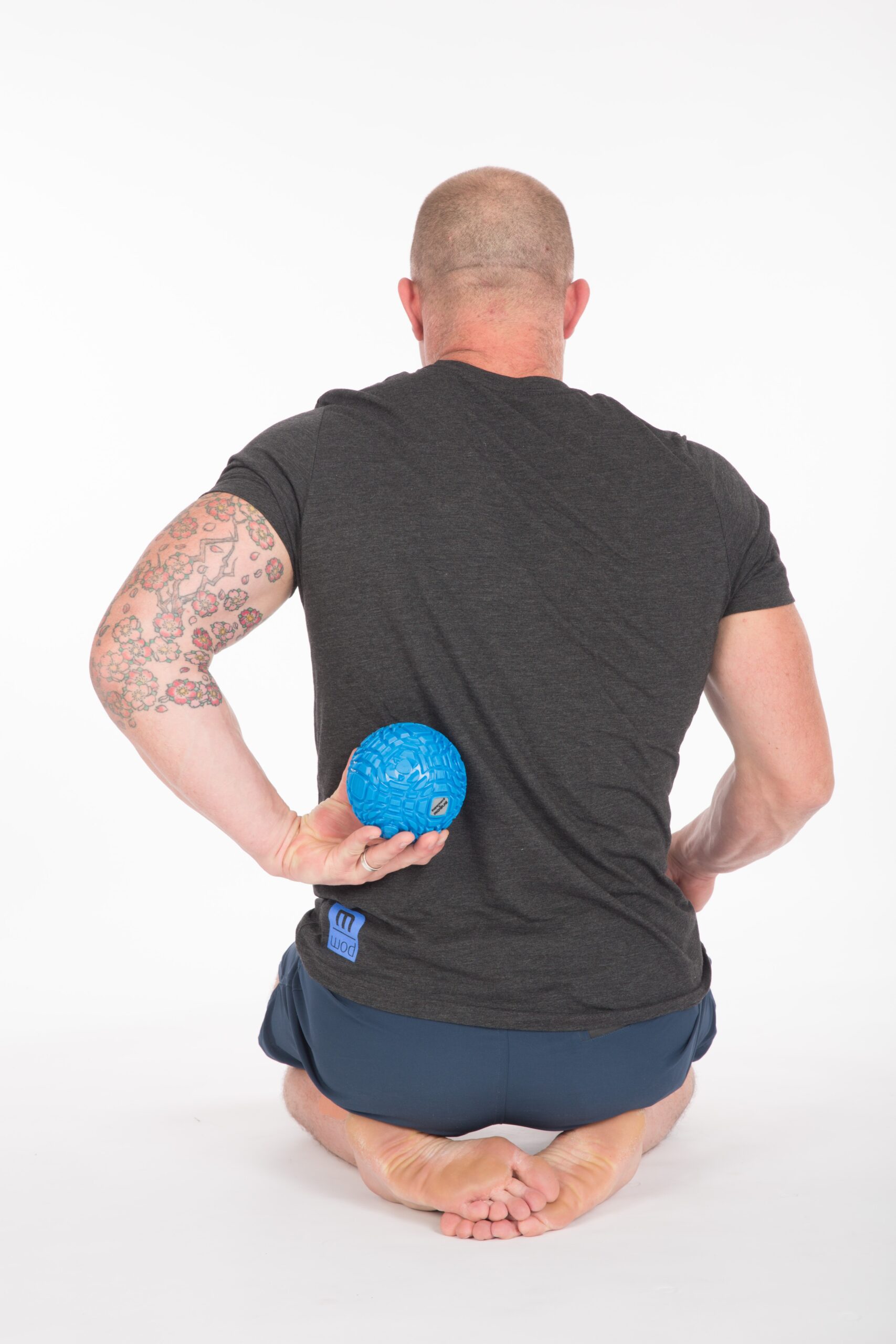
Your Title Goes Here
Your content goes here. Edit or remove this text inline or in the module Content settings. You can also style every aspect of this content in the module Design settings and even apply custom CSS to this text in the module Advanced settings.
Hamstring Smash
- Sit on a bench, plyo box or hard chair
- Place a lacrosse ball under your left hamstring, just below where it meets your butt
- Slowly roll from side to side across the ball
- You can also try extending and flexing your knee for a different stimulus
- Keep moving the ball down until you finish with it just above the back of the knee
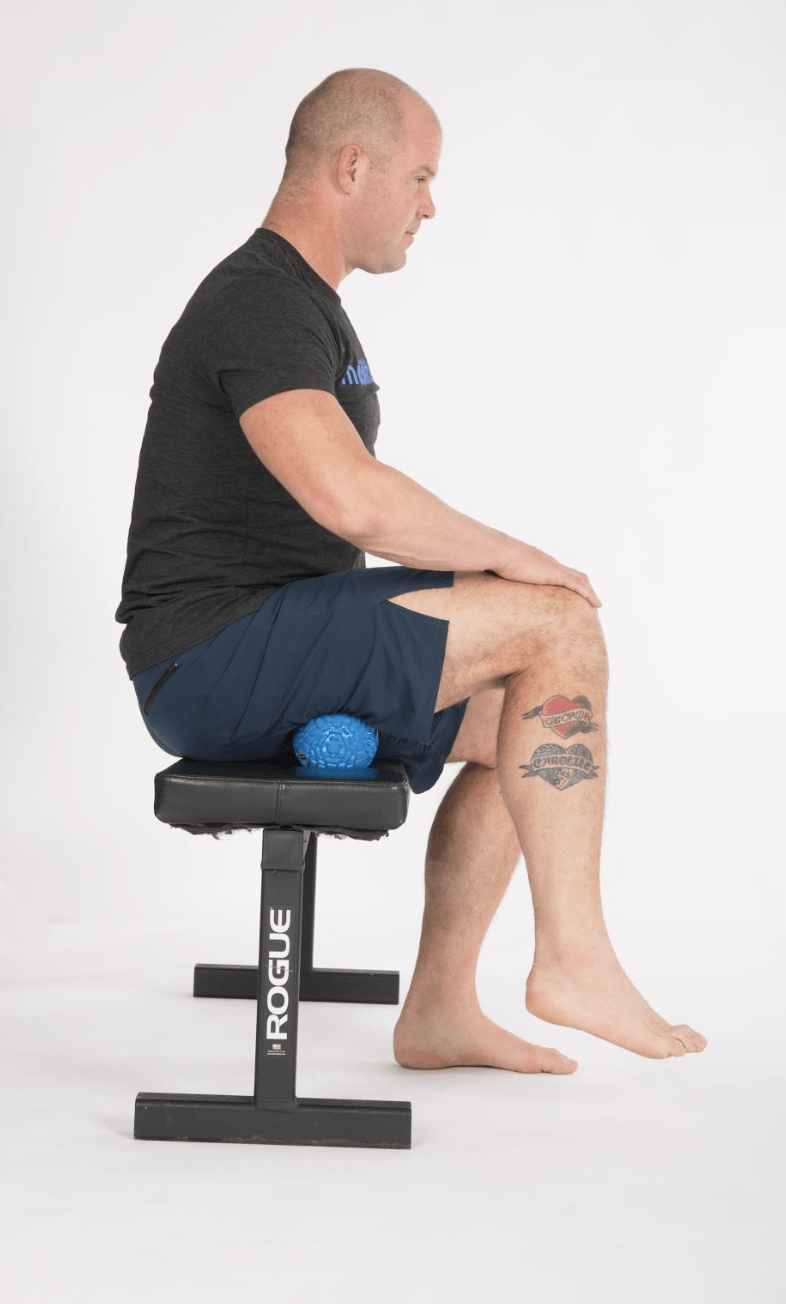
Your Title Goes Here
Your content goes here. Edit or remove this text inline or in the module Content settings. You can also style every aspect of this content in the module Design settings and even apply custom CSS to this text in the module Advanced settings.
External Rotation Hip Opener
- Stand in front of a waist-high counter or bench, and place your left foot on it
- Turn your left foot onto its outer edge
- With your right foot flat on the floor behind you, lean forward with an upright torso until you feel tension in your left hip
- After a few seconds, relax and repeat. You can bias different aspects of the hip by leaning more to the inside or outside, and by twisting your torso toward and away from your midline.
- Switch sides
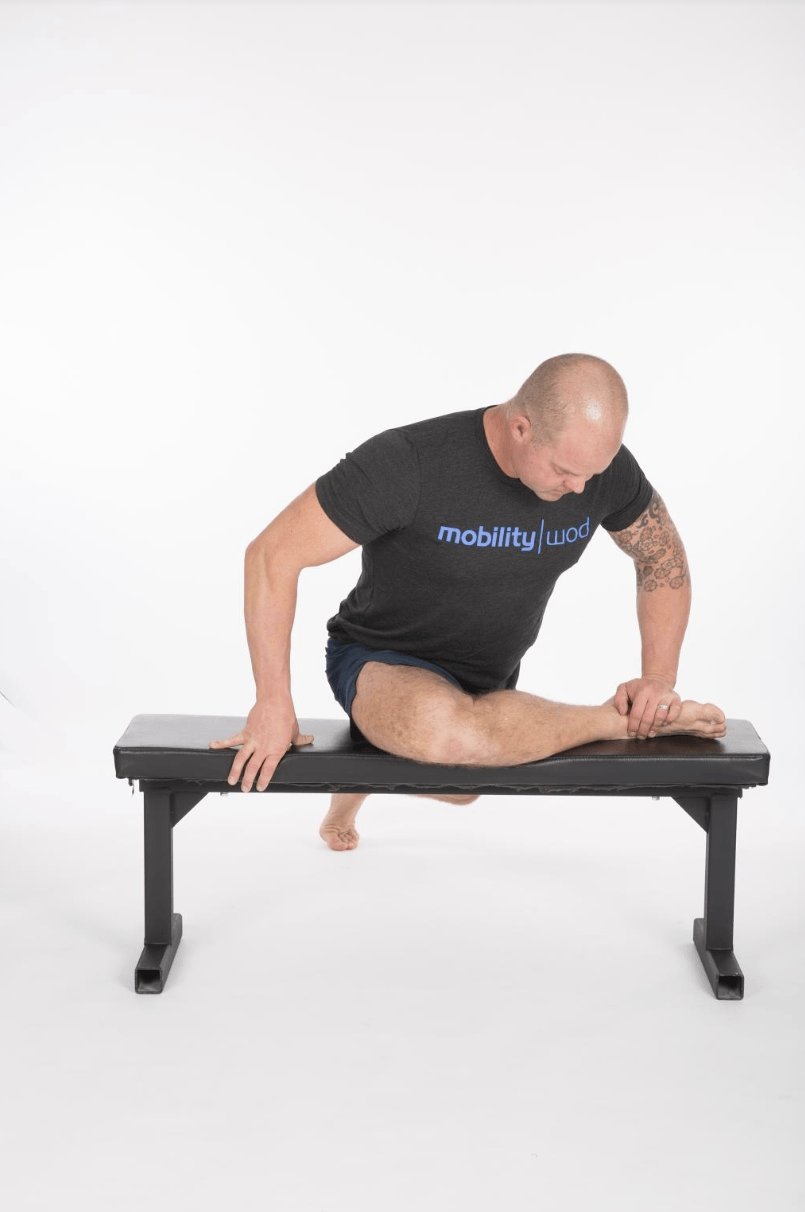
Are you a better coach after reading this?
More coaches and athletes than ever are reading the TrainHeroic blog, and it’s our mission to support them with useful training & coaching content. If you found this article useful, please take a moment to share it on social media, engage with the author, and link to this article on your own blog or any forums you post on.
Be Your Best,
TrainHeroic Content Team
HEROIC SOCIAL
HEROIC SOCIAL
TRAINING LAB
Access the latest articles, reviews, and case studies from the top strength and conditioning minds in the TH Training Lab

